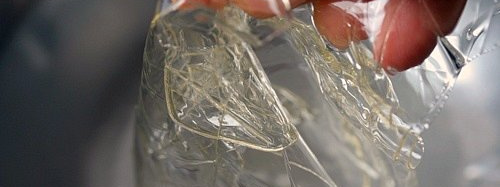Understanding how to effectively use gelatine will transform your summer desserts menu.
Mention of the word gelatine for many people conjures up the kind of lurid-coloured blobs of watery jelly that that wobble beside the ice cream at kid’s parties. Mention gelatin to any competent chef however, and they’ll know it a kitchen must-have, an essential component for creating a classic desserts and confection as well as essential elements of contemporary cuisine.
Gelatin is one of the oldest ‘modern’ ingredients in western cooking, and its continuing popularity is greatly due to its versatility. You’ll find gelatine in everything from savoury glazes to meringue. It’s an emulsifier, stabiliser and preservative, and it’s even used to clarify vinegar, beer and wine.
From tender panna cotta and perfectly set custards to fluffy marshmallows, flavour enhanced gel pearls and edible foams, all rely on gelatine, and to successfully create any of them, it must be used carefully and competently, using the correct type of gelatine in the precise ratios required.
Set The Record
Gelatin is an entirely natural foodstuff that is in fact a pure protein. It’s made by extracting collagen from the skins of pigs and cows or demineralised animal bones. Collagen is the most important scleroprotein found in the bodies of animals and humans, it’s a chain of over a thousand amino acids, linking together to create the three-dimensional structures that form connective tissue.
Unlike other common proteins, usually derived from soy, nuts and milk, gelatine has virtually no allergenic potential, meaning it’s just as frequent used in the pharmaceutical industry and the food industry. The Right Set Up All gelatin has to be hydrated before it can be used (a process known as ‘blooming’). Gelatin comes as a powder, or more often in Europe as dry sheets, also know as leaves. Both forms are used in a similar manner but have a few differences when hydrating. To hydrate powdered gelatin it is sprinkled in cold liquid and let to sit for 5 to 10 minutes. Since the gelatin absorbs all the liquid, the quantity should be taken into account when calculating the recipe. Gelatin sheets are hydrated in a cold liquid for the same duration; however, once they are hydrated, any excess liquid is squeezing from the sheets so as not be included in the final recipe.
Depending on the specific concentration of the gelatin, it’s melting temperature is between 86°F to 104°F (30°C to 40°C). Within this range most gelatins have a melting point that’s the same as human body temperature (36.1 - 37.2°C) and this is what provides the uniquely pleasing, dissolving sensation inside the palate, enjoyed when eating confection such as marshmallows. Once gelatin has been hydrated it can be disperse it into whatever liquid you want to gel. This is typically done through whisking, either by hand or with a standing or immersion blender. When dispersing gelatin, make sure the liquid is warm, typically above 122°F (50°C). If you don't want to heat all of the liquid you can dissolve the gelatin in a portion of it and then recombine it with the rest.
Set And Match
The type of gel created is dependent on how much gelatin you use. If you are using sheet gelatin you will use 0.27-0.55 sheets per 100 grams of liquid for soft gels and 0.55 to 1.6 sheets per 100 grams of liquid for firmer gels. For very firm gels more than 3.3 sheets per 100 grams of liquid is sometimes used. Type Bloom Grams Per Sheet Bronze 125 - 155 3.3 Silver 160 2.5 Gold 190 - 220 2.0 Platinum 235 - 265 1.7 Sheet gelatin also comes in four different strengths: bronze, silver, gold, and platinum. The strength of gelatin is measured by their "bloom strength" and each type of sheet gelatin has a different bloom strength, as shown below.
Type Bloom Grams Per Sheet
BRONZE 125 - 155 3.3
SILVER 160 2.5
GOLD 190 - 220 2.0
PLATINUM 235 - 265 1.7
Maws supply quality Bronze, Silver and Gold leaf gelatin at approx. 1kg weight packs (that’s 300, 400 and 500 sheets respectively). In the next blog we’ll be exploring different gel techniques, exciting ways to use various grades of gelatin, to create everything from sweet and savoury edible foams to old favourite like marshmallow, reimagined with a contemporary twist.
